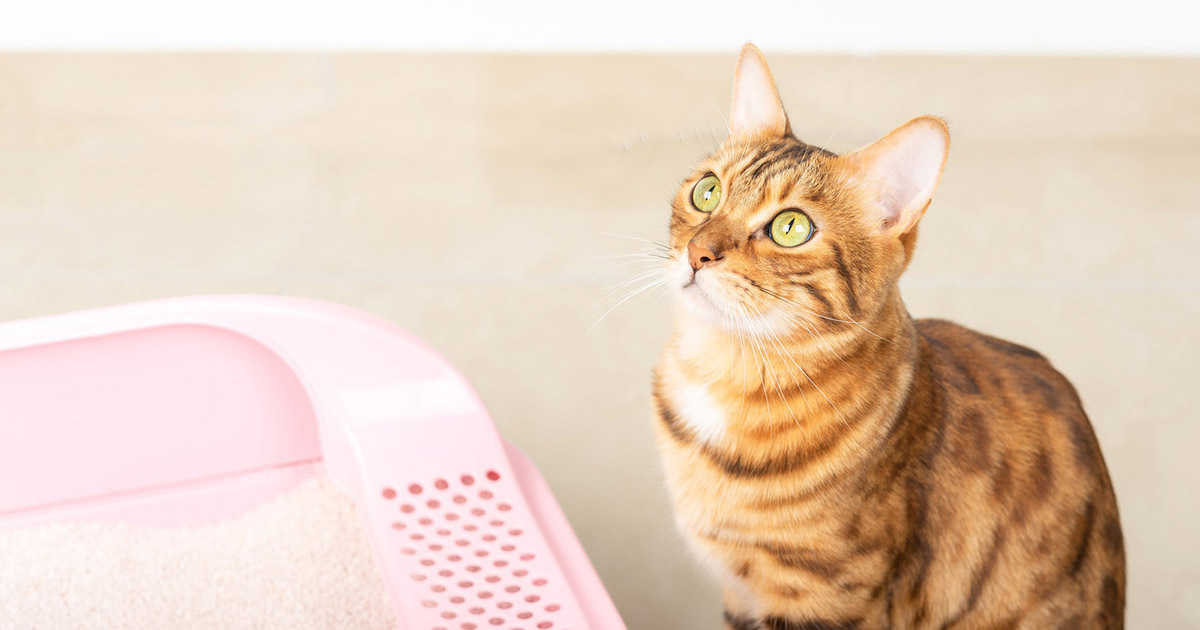Why You Must Never Flush Cat Poop Down Your Toilet - Critical Facts
Why You Must Never Flush Cat Poop Down Your Toilet - Critical Facts
Blog Article
We've discovered this great article on How to Dispose of Cat Poop and Litter Without Plastic Bags below on the internet and accepted it made good sense to relate it with you on my blog.

Introduction
As cat proprietors, it's vital to be mindful of how we throw away our feline pals' waste. While it may seem practical to flush cat poop down the commode, this practice can have detrimental effects for both the environment and human health and wellness.
Environmental Impact
Purging pet cat poop introduces unsafe microorganisms and bloodsuckers into the supply of water, presenting a significant risk to water communities. These impurities can adversely influence marine life and concession water high quality.
Health Risks
Along with environmental issues, purging pet cat waste can additionally posture health risks to people. Feline feces may consist of Toxoplasma gondii, a bloodsucker that can trigger toxoplasmosis-- a potentially extreme ailment, especially for expecting females and people with damaged immune systems.
Alternatives to Flushing
Fortunately, there are more secure and a lot more accountable methods to deal with pet cat poop. Consider the adhering to choices:
1. Scoop and Dispose in Trash
One of the most common method of taking care of pet cat poop is to scoop it right into a biodegradable bag and toss it in the garbage. Make sure to use a devoted clutter scoop and deal with the waste immediately.
2. Usage Biodegradable Litter
Choose eco-friendly pet cat trash made from products such as corn or wheat. These clutters are eco-friendly and can be safely thrown away in the garbage.
3. Hide in the Yard
If you have a yard, consider burying pet cat waste in an assigned location far from veggie yards and water sources. Make sure to dig deep adequate to prevent contamination of groundwater.
4. Set Up a Pet Waste Disposal System
Buy a family pet waste disposal system specifically developed for feline waste. These systems utilize enzymes to break down the waste, minimizing smell and ecological effect.
Verdict
Accountable pet ownership extends beyond providing food and shelter-- it also includes correct waste management. By avoiding flushing cat poop down the toilet and choosing alternate disposal methods, we can minimize our environmental footprint and shield human wellness.
Why Can’t I Flush Cat Poop?
It Spreads a Parasite
Cats are frequently infected with a parasite called toxoplasma gondii. The parasite causes an infection called toxoplasmosis. It is usually harmless to cats. The parasite only uses cat poop as a host for its eggs. Otherwise, the cat’s immune system usually keeps the infection at low enough levels to maintain its own health. But it does not stop the develop of eggs. These eggs are tiny and surprisingly tough. They may survive for a year before they begin to grow. But that’s the problem.
Our wastewater system is not designed to deal with toxoplasmosis eggs. Instead, most eggs will flush from your toilet into sewers and wastewater management plants. After the sewage is treated for many other harmful things in it, it is typically released into local rivers, lakes, or oceans. Here, the toxoplasmosis eggs can find new hosts, including starfish, crabs, otters, and many other wildlife. For many, this is a significant risk to their health. Toxoplasmosis can also end up infecting water sources that are important for agriculture, which means our deer, pigs, and sheep can get infected too.
Is There Risk to Humans?
There can be a risk to human life from flushing cat poop down the toilet. If you do so, the parasites from your cat’s poop can end up in shellfish, game animals, or livestock. If this meat is then served raw or undercooked, the people who eat it can get sick.
In fact, according to the CDC, 40 million people in the United States are infected with toxoplasma gondii. They get it from exposure to infected seafood, or from some kind of cat poop contamination, like drinking from a stream that is contaminated or touching anything that has come into contact with cat poop. That includes just cleaning a cat litter box.
Most people who get infected with these parasites will not develop any symptoms. However, for pregnant women or for those with compromised immune systems, the parasite can cause severe health problems.
How to Handle Cat Poop
The best way to handle cat poop is actually to clean the box more often. The eggs that the parasite sheds will not become active until one to five days after the cat poops. That means that if you clean daily, you’re much less likely to come into direct contact with infectious eggs.
That said, always dispose of cat poop in the garbage and not down the toilet. Wash your hands before and after you clean the litter box, and bring the bag of poop right outside to your garbage bins.
https://trenchlesssolutionsusa.com/why-cant-i-flush-cat-poop/
:max_bytes(150000):strip_icc()/0S1A1090-49a8e2c66f8e41d6901f2559787a7f24.jpg)
Do you really like reading up on Don’t flush cat feces down the toilet? Create a remark down below. We will be interested to see your feelings about this blog posting. We hope that you visit us again before long. Liked our write up? Please share it. Help others locate it. I take joy in reading our article about Don’t flush cat feces down the toilet.
Visit Our Website Report this page